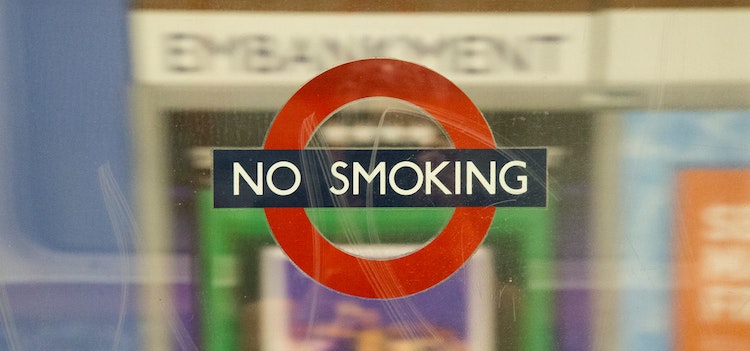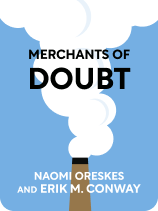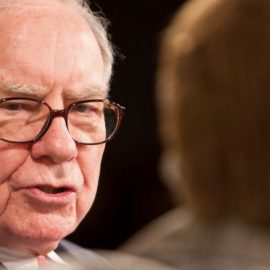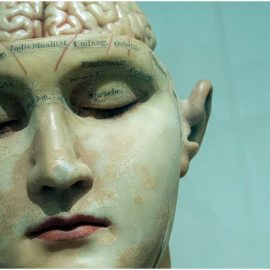

This article is an excerpt from the Shortform book guide to "Merchants of Doubt" by Naomi Oreskes and Erik M. Conway. Shortform has the world's best summaries and analyses of books you should be reading.
Like this article? Sign up for a free trial here .
What is the history of science and the tobacco industry? Why did it take so long for most people to believe that smoking is harmful?
In Merchants of Doubt, historians Naomi Oreskes and Erik Conway look at doubt-mongering around the science of tobacco use. Their doubt-mongering was so successful that it took over 50 years for the majority of the public to believe that smoking is dangerous to health.
Read on to learn about the history of science and doubt in regard to the tobacco industry.
Doubt-Mongering in the Tobacco Industry
Scientists have known that smoking is bad for you since the 1930s when German scientists discovered that smoking cigarettes caused lung cancer. (Lung cancer was uncommon before smoking became widespread.) However, because German science had Nazi associations, most people ignored it.
In the 1950s, scientists at the Sloan-Kettering Institute rediscovered the cancer-causing effects of tobacco when they painted cigarette tar on mice and the mice developed terminal cancer. Their research was widely publicized, striking fear in the hearts of those involved with the tobacco industry.
The MOD’s Response
The tobacco industry responded to the Sloan-Kettering Institute discovery by hiring PR firms to challenge the science. Four tobacco companies—American Tobacco, Benson and Hedges, Philip Morris, and U.S. Tobacco—and three PR firms launched a campaign that included:
- Creating the Tobacco Industry Research Committee. This organization funded research that suggested tobacco and cancer weren’t linked, and it persuaded the media to show “both sides” of the story by invoking the Fairness Doctrine.
- Connecting with Dr. Clarence Cook Little in 1954. Little was a geneticist who supported eugenics. According to him, cancer was written into people’s genes and couldn’t be caused by external factors. The industry hired him to head the Tobacco Industry Research Committee.
- Promoting the work of Wilhelm C. Hueper, with his permission. Hueper was chief of the Environmental Cancer Section for the National Cancer Institute (a reputable organization), and he had given a talk questioning how related tobacco and cancer were. (This might have been because he was often called as a witness in asbestos litigation, where sometimes, lawyers would try to blame the plaintiff’s cancer on smoking instead of asbestos. If there was no link between cancer and cigarettes, then asbestos would have to be the cause.)
- Asking previously settled questions. The industry asked journalists questions that scientists and the industry (but not the journalists) knew the answers to. Phrasing the facts as questions made them seem uncertain. For example, the industry asked: Why do more people get cancer in the city than in the country, even if the smoking rates in both regions were the same? (The answer is that other things cause cancer.)
- Establishing relationships with reputable organizations. By the early 1960s, the tobacco industry had connections to medical schools, public health, and doctors.
Further Scientific Exploration
Scientists continued studying tobacco and continued to find that it caused cancer:
- In 1957, the U.S. Public Health Service found that smoking was the main factor responsible for the increase of lung cancer.
- In 1959, the American Cancer Society declared that smoking cigarettes was the major cause of lung cancer.
- In 1962, the Royal College of Physicians announced that cigarette smoking caused bronchitis, cancer, and likely heart disease.
Tobacco industry scientists were getting the same results. They also discovered that nicotine was addictive (the rest of the scientific community wouldn’t discover the effects of nicotine until the 1980s).
Advisory Committee on Smoking and Health
In 1962, U.S. Surgeon General Luther L. Terry created an Advisory Committee on Smoking and Health. To make sure the panel wasn’t biased, Terry excluded anyone who had previously expressed an opinion, allowed the tobacco industry to vet potential panelists, and invited panelist nominations from the tobacco industry.
In 1964, the committee produced a report that had considered over 7,000 studies and over 150 consultants’ testimonies. Despite the industry’s involvement with the committee and its report, the report found that smoking tobacco was very unhealthy:
- Smoking was the principal cause of lung cancer (not pollution, asbestos, radioactivity, or other causes the industry had tried to blame it on.).
- Smokers were at least 10 and up to 20 times more likely than non-smokers to get lung cancer.
- Smokers were more likely than nonsmokers to get emphysema, heart disease, and bronchitis.
Terry released the report on a Saturday (to avoid paralyzing the stock market) and in a locked auditorium (for security). The report was huge because it revealed:
- Smoking was harming almost half the adults in the U.S. (at the time, almost half of adults in the U.S. smoked).
- The government, which taxed tobacco companies and subsidized tobacco farming, was supporting this dangerous practice.
There were still uncertainties, as is normal for science. For example, scientists didn’t know why not all smokers get lung cancer (and this is still unknown today). By this point, however, there was no reasonable doubt that smoking caused cancer.
The MOD’s Response
The 1964 report dealt a serious blow to the tobacco industry, and some industry members suggested concessions such as:
- Stop denying the harmful effects of tobacco.
- Add warning labels to cigarettes to make the hazards clearer.
- Try to make cigarettes less dangerous. For example, the cigarette manufacturers Liggitt Group filed a patent application for a technique to reduce the tumor-causing effects of tobacco (by doing this, of course, they admitted that they believed it did cause tumors).
For the most part, though, the tobacco industry didn’t give up. They:
- Changed the name of their council to Council for Tobacco Research (to get rid of the word “industry”). The organization would now focus on health research, not industry or commercial research.
- Looked for more scientists who were doing work that might support the industry
- Put more money into doubt-mongering (they’d already spent over $7 million)
- Hired a new PR firm
Further Scientific Exploration
Despite the tobacco industry’s continued work, the scientific evidence kept piling up that smoking was dangerous. Three conclusions were reinforced by 2,000 new scientific studies:
- Smokers were less healthy and died sooner than nonsmokers.
- Most of the smokers who had died early wouldn’t have died if they hadn’t smoked.
- Almost none of the smokers who had died early of lung cancer would have died if they hadn’t smoked.
Policy and Public Action
The scientific evidence was enough to spur change by 1969:
- In 1965, Congress had put forward bills that tobacco packaging and ads had to include health warnings. The industry fought back with doctors and a cancer specialist as expert witnesses, but four years later, Congress did mandate warning labels on cigarette packaging.
- The Federal Communications Commission banned cigarette advertising from radio and TV.
- The percentage of American adults who smoked fell to 37%. (It would fall another 6% by 1979.)
- The New York Times stopped covering the industry’s views as part of “balanced” coverage.
The MOD’s Response
Despite the turn away from smoking, the tobacco industry was still doing well:
- Profits were on the rise. Therefore, the industry was motivated to keep defending tobacco.
- The industry was still winning lawsuits. Between 1954 and 1979, nine of 125 health-related lawsuits went to trial, and the tobacco industry won all of them by having scientists testify that the link between smoking and cancer was unproven.
By the end of the 1960s, so much peer-reviewed research had concluded that smoking causes cancer that the industry shifted from trying to find evidence to prove their position to distraction and doubt-mongering. Notably, they:
1. Fought the ban on advertising. They did this by publicly supporting the ban (because the Fairness Doctrine gave antismoking groups free ads, and these were affecting public opinion) and privately approaching the liquor industry and warning them the FCC would eventually go after them too, hoping to gain their support. (The FCC had stated that they had no intention of trying to control advertising of any other sensitive products.)
2. Funded research with the help of Dr. Frederick Seitz. In 1979, Seitz joined up with the tobacco industry to award $45 million worth of funding to scientists doing biomedical research on the leading causes of death in the U.S. The goals of the program were to:
- First and foremost, create data that would help the tobacco industry defend against the science that said smoking was unhealthy.
- Distract the public with research that would focus their attention on other things, such as the effects of stress on disease.
- Help cure and prevent the health problems tobacco caused.
- Reduce taxes on cigarettes (taxes were raised partly because science had found that tobacco was harmful).
With the help of two other scientists, Seitz would decide who got the funding. Everyone who ultimately received it was respected and worked for prestigious organizations, and all of the studies addressed legitimate topics.
Seitz was especially interested in two scientists:
- Martin J. Cline, who studied the cell’s natural defenses. His work had the potential to suggest that cancer was related to defense failure, not outside causes.
- Stanley B. Prusiner, who studied prions (abnormal proteins that can trigger normal proteins to change their shape, which can cause disease). His research might reveal that cancer produced itself instead of being caused by anything external.
This program had several results:
- It did find useful industry witnesses. (The industry wouldn’t lose court cases until the 1990s.)
- It contributed to advances in science. Prusiner did important work and went on to win a Nobel Prize.
- It kept the public confused. Plenty of Americans continued to think the matter wasn’t settled. (Even by the 1990s, almost 25% of people polled doubted that smoking was harmful.)
By the end of the 1980s, however, Seitz was connecting with people with extreme views and some thought he was becoming irrational. In 1989, a tobacco executive suggested the industry stop working with him because he was elderly and irrational.
Policy and Public Action
Eventually, the truth mostly won out. In 2006, the industry was found guilty under the Racketeer Influenced and Corrupt Organizations (RICO) Act for defrauding the public about the dangers of cigarettes that their own company documents proved they’d known about. In 2009, Congress gave the FDA power to regulate tobacco as an addictive drug. Today, almost every American knows that smoking causes health problems.

———End of Preview———
Like what you just read? Read the rest of the world's best book summary and analysis of Naomi Oreskes and Erik M. Conway's "Merchants of Doubt" at Shortform .
Here's what you'll find in our full Merchants of Doubt summary :
- How doubt-mongering techniques are used to discredit those who threaten a person or company's agenda
- The 10 most common doubt-mongering techniques
- Steps you can take to protect yourself from doubt-mongering






